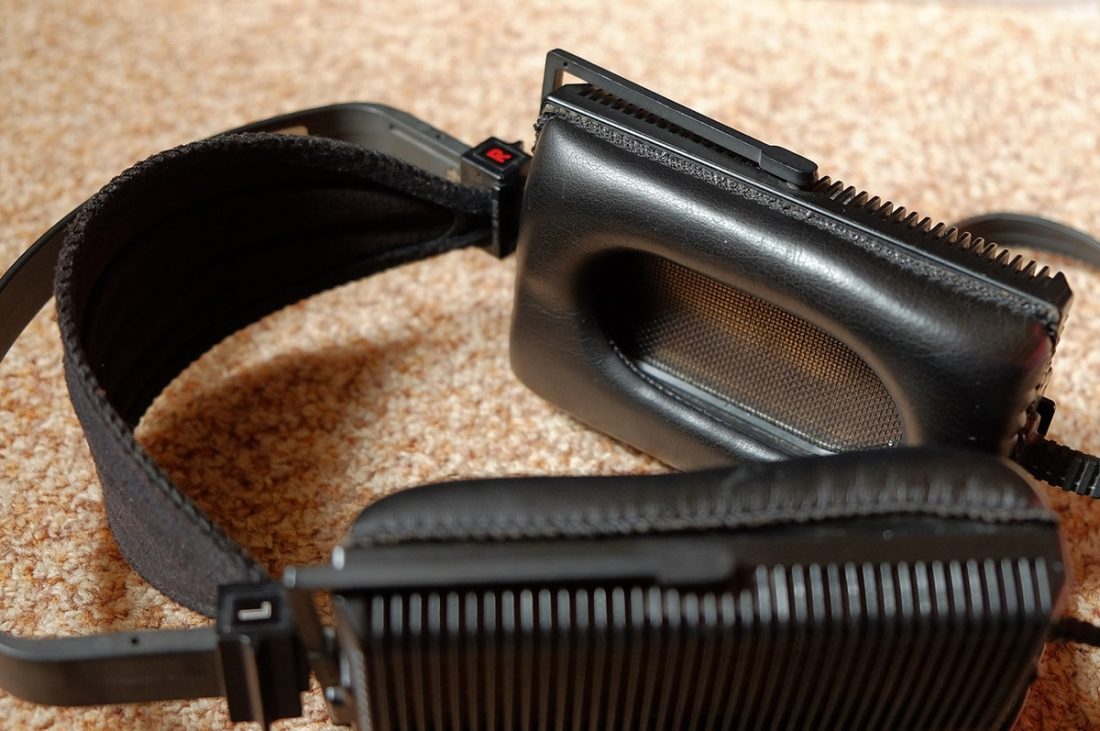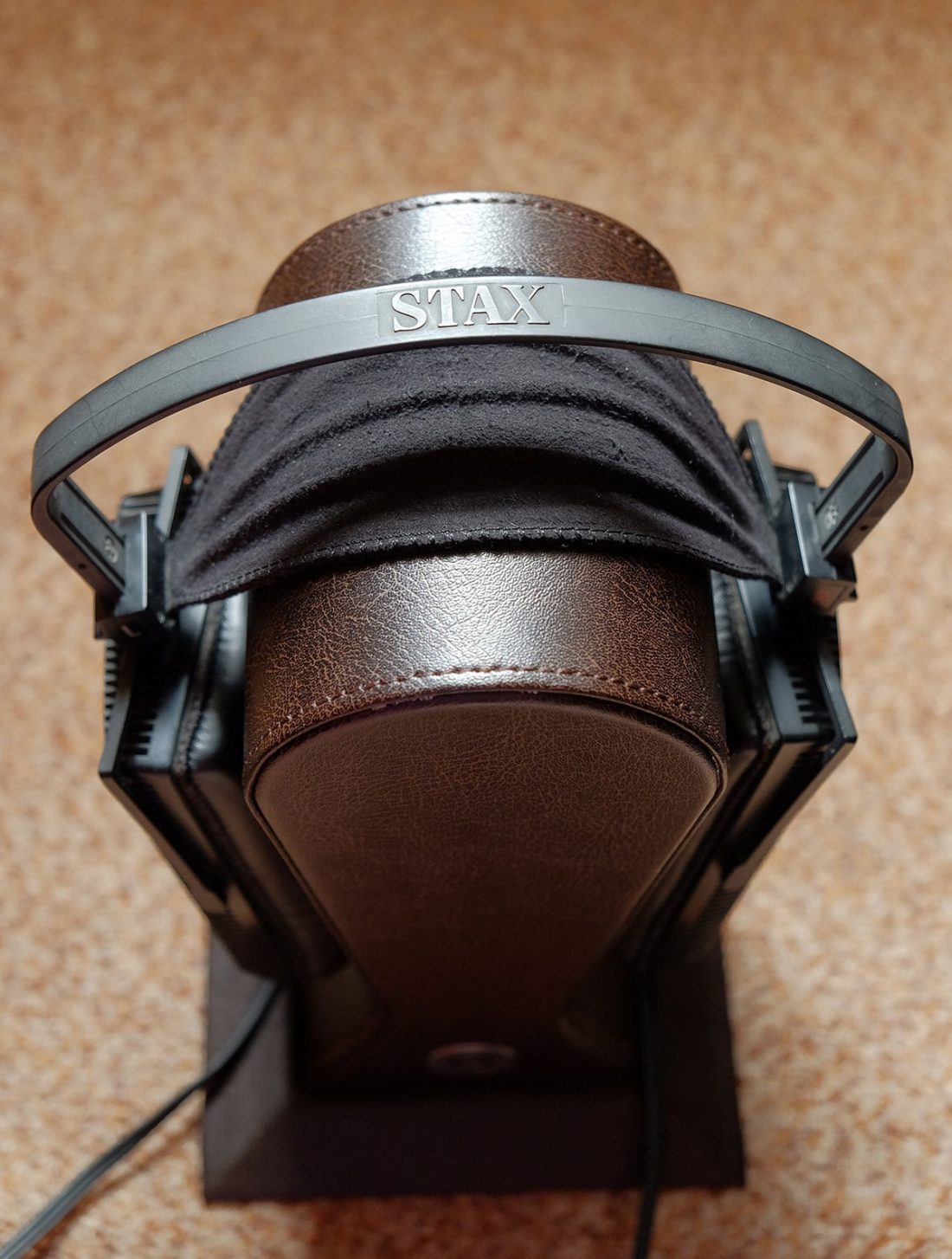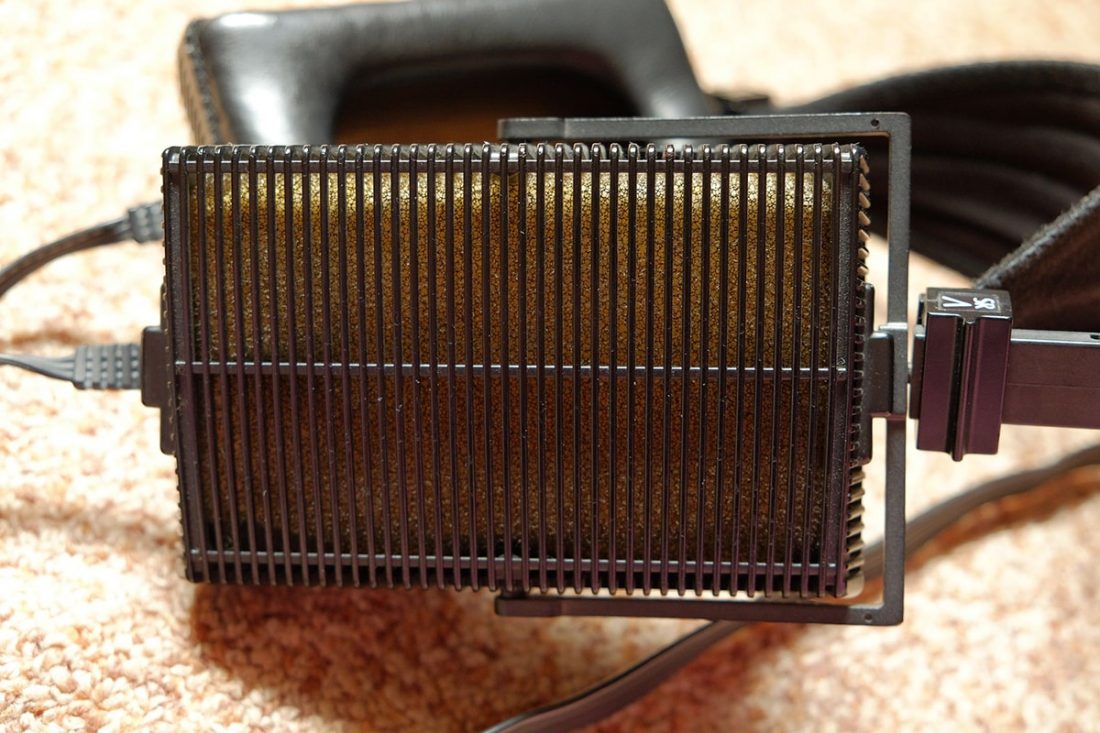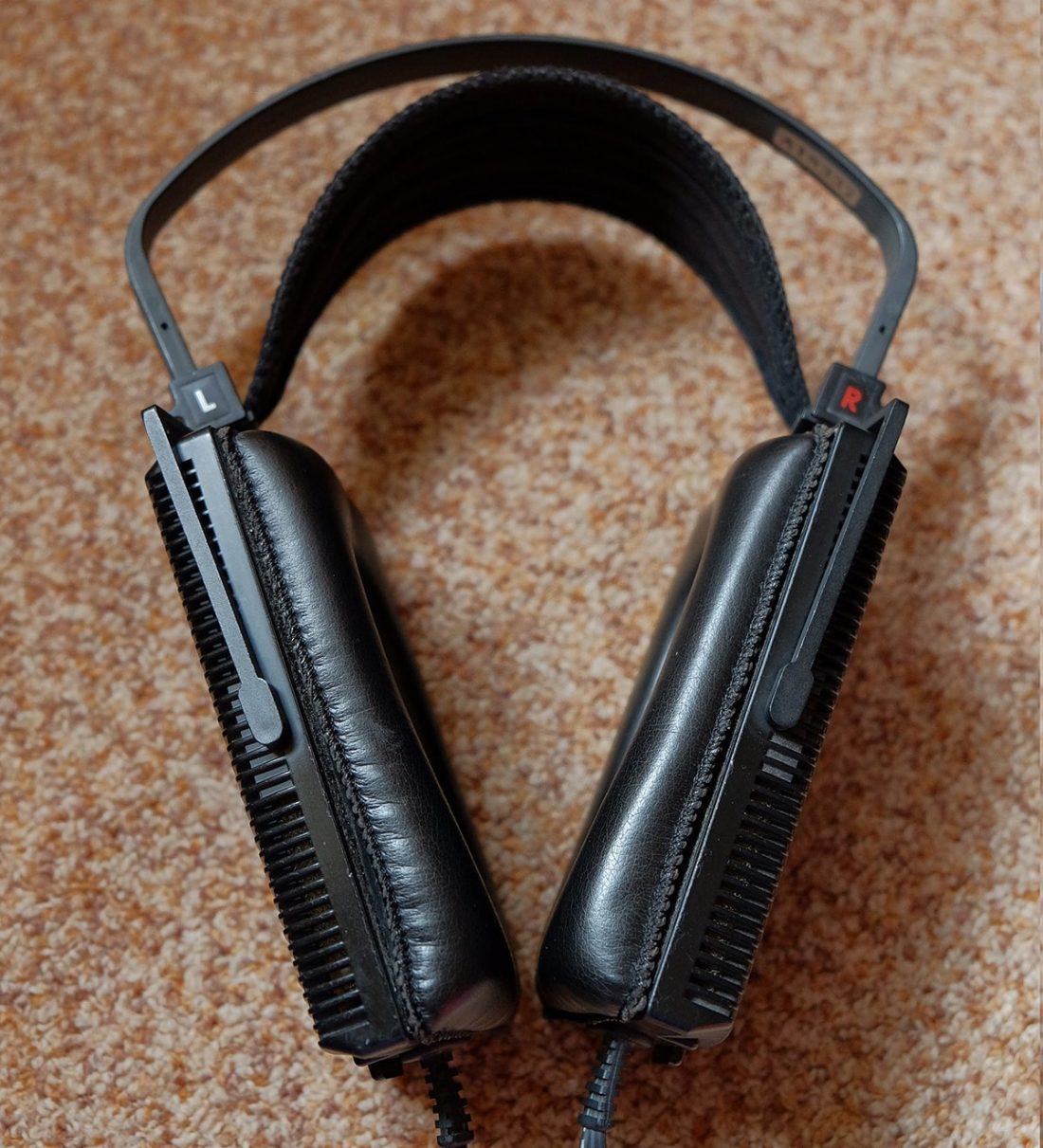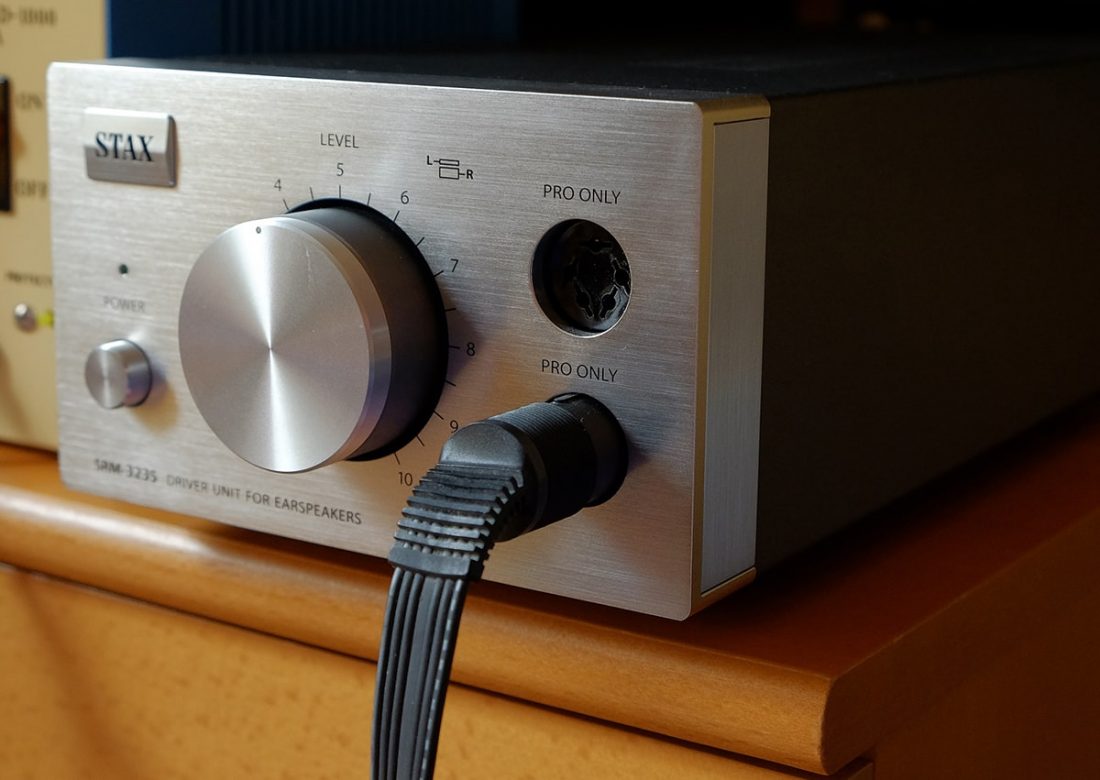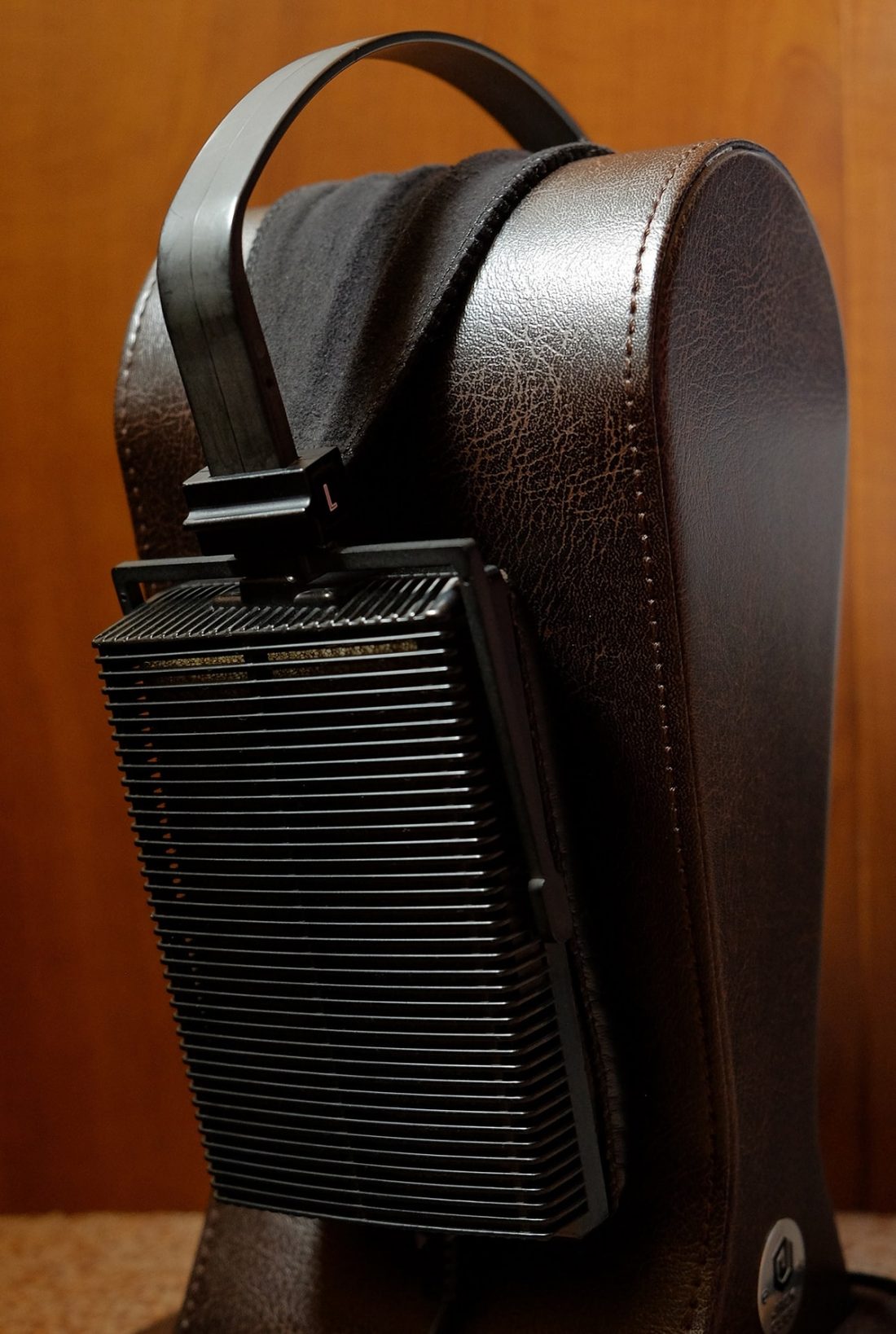The version I bought is a Stax SR-Lambda Pro (or SR-Λ Pro). Released in 1982, it is the second Lambda ever produced. The first Lambda was launched in 1979 and had normal-bias plugs (230V), whereas all the other Lambdas were designed with pro-bias cable (580V). Over the years, several Lambda were produced and the current line is composed of 4 models: the Stax SR-L300, SR-L500, SR-L700 and SR-L300LE. Like any electrostatic headphones, they need a dedicated amplifier for it to power it efficiently. Stax headphones are not cheap, the lowest-end of their model (a set of headphones + amplifier) costs $840 (though they are cheaper when imported from Japan).
Build and Style
Although the design of the Lambda Pro looks dated (They were designed 40 years ago.), I do find it oddly attractive. Most people, nowadays, will find them ugly or at least odd-looking but I am certain Stax fans will share my appreciation of its aesthetic.
Materials
Plastic is used for every part of the headphones except the ear pads (which are made of vinyl leather), the driver assembly and housing. The headband has a cloth suspension strap that rests on the top of the head and helps for better weight distribution. The articulation pivot between the ear cups and the headband seems a bit fragile. The ear cups can swivel and rotate in any direction. Replacement headband is still available for $140, same for the earpads which cost $50. This is impressive for a product that has been discontinued for almost 30 years ago. There is some mineral wool on the rear of the driver (visible from the outside) which works as a dampening material. The Lambda Pro uses a 2 m long ribbon cable that is very thick and non-detachable (like any other pair of Stax headphones).
Durability
Overall, the Lambda Pro feels durable and it shows from their age. Despite been manufactured almost 3 decades ago, it still works perfectly, without any functional issue. However, I’m always extremely careful when I’m handling it. When putting them on the head, I don’t want to apply too much pressure on the cup housing the stators and having hair going inside the ear pads since the internal foam is gone on this 36 years old veteran. Editor’s note: Stators are electrically conductive metal grids that hold the diaphragm together. It is the core structure from which electrostatic headphones produce sounds. The driver enclosure of these Stax hosts a 1.5-micron thick diaphragm. Any strong pressure on the inside of the cup could damage them. It is totally impossible to repair a damaged electrostatic driver, even dust particles can harm them (causing rattle and noise on the damaged channel). Hence, Stax sells a dust cover to protect the headphones.
Comfort
The Lambda Pro is definitely more comfortable than the average headphone. It still loses out slightly to some comfort kings that I had used such as the Beyerdynamic DT880, Sennheiser HD600 or AKG K701. Thanks to their large velour earpads, these circumaural (over-ear) cans are pleasing to wear.
Ear Pads
The pleather ear pads are barely deep enough for my ears. They seem thicker than the recent Lambda models judging from online pics so I would be a bit concerned about the comfort of an L300 or SR-507. With the internal foam protecting the driver deteriorated, it is not the best feeling to have your ears touching the inside. I can wear them for two hours before it starts to get annoying. I need to take them off, partly due to my ears getting hot with the synthetic leather.
Headband and Weight Distribution
Clamping force is extremely weak. If I move my head down, they could easily fall off. My guess is that the clamping force must have weakened with age. I had to reduce the headband adjustment to the absolute minimum to be able to wear them with a proper fit. This was definitely surprising to me. It weighs 335g without the cable, thus, there is no weight issue. However, the cable weighs around 150g. I had to put it on my knees to lessen the annoyance of its weight.
Sound
I have read for hours about the Stax house sound and with time, I developed a rich and precise idea of how they would sound in my mind, without ever listening to them. And they actually sound exactly like how I imagined it to be. It has a balanced presentation with some brightness and impressive speed.
Bass
The bass is tight, very clean and accurate. The Sennheiser HD600 (my reference headphones) have just a tad more impact from 80 to 150 Hz and the upper bass to lower mids are more elevated. The Stax Lambda Pro are very flat and even a bit too lean for me, with moderate extension below 80hz. The Stax extend slightly better than the HD600, but both roll off below 40hz. I hear a lot of people saying “with electrostatics, you hear the bass but you don’t feel it“. I don’t totally agree with this statement. Despite the fact that I’m not basshead, I still like some impact from time to time. Although the Lambda Pro have less impact than most dynamic headphones, I am satisfied with the amount of bass they deliver. Having a good seal (especially at the bottom of the ears) is extremely important when wearing a pair of Stax Lambda. A bad fit will increase the midbass but kill any low-end extension, as illustrated on this graph.
Midrange
Midrange is broadly accurate. I don’t hear any unevenness but it sometimes sounds a bit too dry or simply uncolored to me. The HD600 has a more pleasant midrange, sounding fuller, especially with some warmth in the lower-midrange and an emphasis in the upper-midrange. The Stax Lambda Pro totally lack any warmth but is not shouty at 1-2 kHz, a complaint I have read a lot about the more recent Lambda. Voices, male as well as female, are very good. It was neither too forward nor artificial. It was also not recessed in any way.
Treble
This is where things can get complicated. I am very sensitive to lower and mid-treble peaks (from 5 to 9 kHz) especially when there are some nasty ringings. The HD600 is a bit relaxed in that region while some AKG or Ultrasone are very harsh. However, the Stax continue to be pronounced after 10 kHz. On very fast tracks with a lot of air and upper-treble, it can become fatiguing over time. There is a narrow peak at 10 kHz and they extend extremely far, well after 15 kHz. There are so many small details that make bad recordings an annoying listening experience.
Dynamics and Soundstage
The soundstage is a bit wider than the HD600. The Lambda Pro portray the instruments well with no noticeable anomaly. There is also no lack of center image. Now let us talk about the speed and resolution. I must say Wow. For a pair of headphones made in 1982, they have amazing resolution abilities. During A/B listenings, the HD600 sound compressed next to the Stax but it is partly due to the difference in treble presence. The HD600 resolve almost as good as the Stax Lambda Pro in macro dynamics when they are paired with a good amplifier. The Stax have a much faster transient response, so the overall presentation, while being balanced, sounds thin. This makes them a bit genre-specific. With faster genres like electro, pop or acoustic music, they perform well but they can sound too thin or even sharp. This is due to the abundance of treble extension and air, and on the other end the lack of warmth, body and mid-bass impact.
Summary
I am pleased with my entry into the electrostatic world through these Stax SR-Lambda Pro. As expected, they are not my cup of tea sound-wise but I like their performance (and I am pleasantly surprised by their bass performance). The Lambda Pro can be found used between $250 and $350, which puts them into the mid-fi pricing segment. Of course, you should consider the cost of an amp s as well. I am truly impressed by these vintage headphones as they hold extremely well against the current offerings and can easily trump any other vintage pair that I have had the opportunity to hear.
